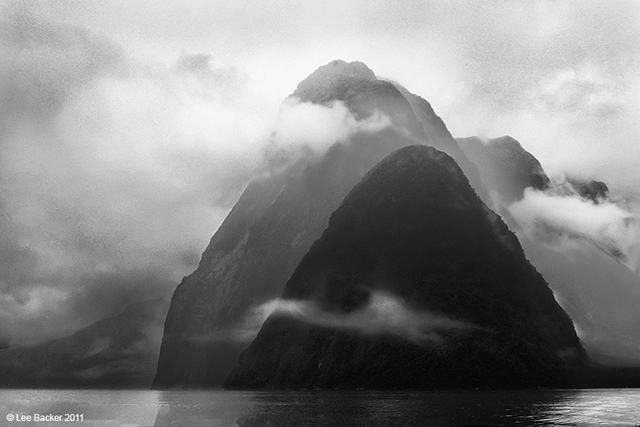This winter has been brutal in the northeast. I can't remember the last time the weather has remained frigid for so long. I thought there would be a couple of days here and there when I could go out and photograph around twilight. But that hasn't happpened so far. So i have resorted to reviewing past images. This one I took in Great Smoky Mountain National Park last April.
Read More2014 in Review, Part 3
This image was shot from the High Line, a relatively new addition to New York City's parks, in Manhattan's Chelsea neighborhood. The High Line was an elevated freight railway that had been abandoned for over 30 years before it was transformed into a park. The elevated viewpoint provides some unusual photographic opportunities.
I thought of using this image, in color, for The Edge of Night series, but I decided it looked more dramatic and noir in B&W. When I first arrived at this spot, people were strolling along the walkway, seemingly uninterested in the sliver of space between these two industrial buildings. After I had the tripod set up, I carefully framed the image, took a shot, and repeated these steps a few more times. As I was immersed in my work, I became aware of several groups of people stopping to capture the scene on their phones before walking on. I wonder how many of them would have stopped to appreciate it had I not been there.
2014 in Review, Part 2
Toxic and Desirable
I took this photo of the Gowanus Canal last summer just before sunset. I was scouting the area to find locations to photograph later, at twilight, for The Edge of Night project. The warm glow from the sun makes even this place, whose toxic contaminants began accumulating in the nineteenth century, look attractive. The Gowanus Canal was designated a Superfund site in 2010.
“Manufactured gas plants, mills, tanneries, and chemical plants are among the many facilities that operated along the canal. As a result of years of discharges, storm water runoff, sewer outflows and industrial pollutants, the Gowanus Canal has become one of the nation’s most extensively contaminated water bodies. Contaminants include PCBs, coal tar wastes, heavy metals and volatile organics.”
I enjoy photographing the area around the canal because of its gritty industrial past, which is still apparent in the present. But change and gentrification are inevitable, even here. Although the start of the EPA's planned cleanup is still a couple of years away, developers have already started building condos that will overlook the canal, and trendy restaurants are cropping up. There is even a Whole Foods Market, which opened on land next to the canal, I want to continue visiting this area of Brooklyn to try to capture a sense of its past before it completely disappears and to witness its transformation into yet another hip new neighborhood to live in..
2014 in Review, Part 1
At the beginning of each year, I like to review my photos from the past year and pick out some favorites. Here is a shot I took last spring at the Audubon Swamp Garden in Charleston, South Carolina.
Read MorePresenting My Work January 15 at NY PhotoGroup Salon
I am delighted to have been asked to give a presentation of my work to the New York PhotoGroup Salon, a group that meets monthly at the School of Visual Arts in New York City. Please join me there if you can. Here are the details:
The NY PhotoGroup Salon
hosted by SVA MPS Digital Photography Department
Thursday January 15th, 2015 at 6:30 pm at
School of Visual Arts
136 W 21 St, Room 418-F
New York, NY 10011
(between 6th and 7th Avenues,
on the south side of the street)
PLEASE NOTE: There is no cover charge,
but seating is limited.
Featuring the work of
Bina Altera
Lee Backer
Andreas Rentsch
Saul Robbins
The PhotoGroup Salon Committee
Jay Maisel
Bill Westheimer
Jack Reznicki
David Hodgson
Beth Ackerman
Klaus-Peter Statz
Happy New Year!
I have neglected my blog for too long, so I resolve to update it regularly. Here's a photo I took on the first day of the new year.
The Domino (Sugar) Effect
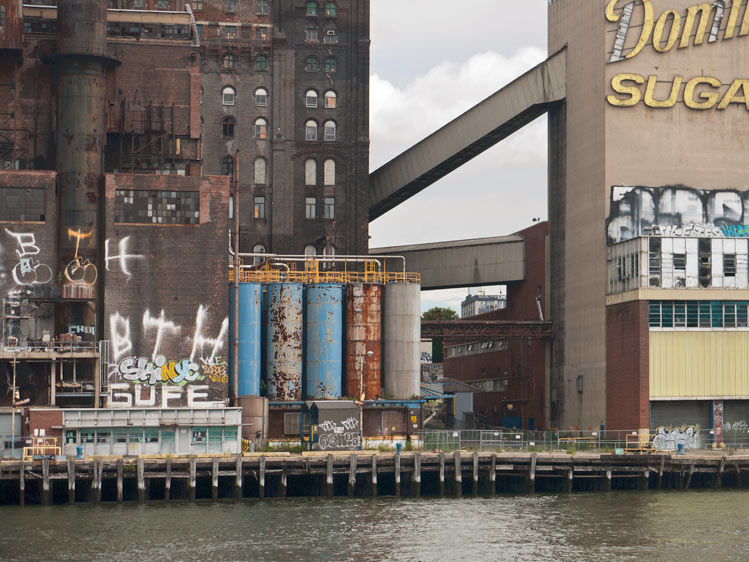 The Domino Sugar Refinery on the East River in Queens, New York, ceased operations several years ago and now awaits an uncertain future. I took this photo last summer on a fast-moving water taxi, so I didn't have much time to think about how to shoot it. I was attracted to the colorful tanks in the center, the angled shafts between the buildings, and the overall look of an industrial ruin.
The Domino Sugar Refinery on the East River in Queens, New York, ceased operations several years ago and now awaits an uncertain future. I took this photo last summer on a fast-moving water taxi, so I didn't have much time to think about how to shoot it. I was attracted to the colorful tanks in the center, the angled shafts between the buildings, and the overall look of an industrial ruin.
A Nice Review
20120430_518
A juried photography exhibit in the New Marlborough, MA Meeting House Gallery, which ended in June, included two of my recent prints. One was taken in Lima on a trip to Peru, the other in Manhattan.
The TriCorner News, a local newspaper that covers towns in northwest Connecticut, southwest Massachusetts, and nearby New York, reviewed the show and said:
Lee Backer entered two wonderfully different shots. In “Amarillo,” a study in diagonals, light and shadow, a boy and girl sit on a low concrete or adobe wall, their backs to us. In front of them is a reddish wall partially in heavy shadow, behind them a sunlit downward sloping path. In “Alice Tully Hall,” the vertical panels of the refurbished Lincoln Center theater reflect the activity of the busy Broadway neighborhood. It is prismatic, bright, colorful.
Machu Picchu, Inspired by Bruce Barnbaum
"Good artists copy, great artists steal." - Pablo Picasso
A few years ago I took a workshop with Bruce Barnbaum. During the workshop Bruce showed a lot of his prints and talked about the art of seeing and creating. My photo, Machu Picchu, Clouds and Birds, was inspired by a print Bruce showed from his first Machu Picchu trip. It has stuck in my mind ever since, and I occasionally go to his website to view it. What captivated me about his photo were the mountains peeking through the clouds and how he used the wall to anchor the scene.
The thought occurred to me that I am stealing Bruce's idea, that the image is his vision, not mine. In a way, it's true. I probably would not have thought of taking this particular photo had I not seen his. But the two photos are different. I chose to shoot the wall straight on, while Bruce's wall is angled slightly. I remember trying to capture the birds flying up in the clouds and around the ruins. Using a handheld camera, I was able to take several shots in the hope of capturing a bird swooping around the ruins. I believe Bruce was shooting with his 4x5 view camera, so it would not have been practical for him to include flying birds. And, of course, clouds are never the same.
Machu Picchu at 6:00 AM
I spent two days in Machu Picchu this past May, and I have to say it surpassed all expectations. It is bigger and more spectacular than I imagined. By the time I entered the citadel on the first day it was already late morning. There were clouds, but it was mostly sunny—not my favorite lighting. Nevertheless, there were plenty of photographic opportunities. The photo above is one I especially liked from that first day.
On day 2 I woke up at 5 am so I could be at the park when it opened at 6. What a difference! When I arrived at the gate, along with a hundred or so other people, it had just stopped raining. Clouds and fog surrounded the lost city. Occasionally the mountains would peek through for a moment and then disappear. When the gates opened, people headed off in all directions. It was easy to get away and be alone to experience Machu Picchu in silence and let its spiritual presence and the fog surround me. This is what I came for, and I was not disappointed. Many of the photos I like were taken before 8 am. Here are some pictures from that day. You can see the full Machu Picchu gallery on my website.
Callanish Stones in Black and White
I was quite pleased with the color images in my previous post, especially given that they are from negatives over 30 years old. However, when I made prints for a print critique session, I was surprised by everyone's reaction: “Make them in black and white.” The subject is the stones, their forms and textures, they said, not the color. So I made a black and white version of each, which you see here. Quite a different feeling in black and white! Why is that?
This is what I think occurs when viewing black and white photos. By removing color, an image is one step removed from reality. It is partially abstracted, and the viewer reacts differently to the image because of this abstraction. With black and white, the viewer's imagination plays a bigger role, much like the way a radio drama can engage the listener's imagination in ways that television can't.
I still like the color versions, but for me the black and white versions have a stronger impact. They are mysterious and mystical. To put it simply, the color image is closer to what I saw when I was there; the black and white is closer to what I felt.
What are your thoughts? Which version do you like better, the color or the black and white? Why?
Ancient Rock Stars
Here are two shots I’m including in my March 13 presentation, Beyond Stonehenge – Rock Stars of the Neolithic Era. These are the Callanish Stones in Scotland on the Isle of Lewis. In their own way they are as magnificent as Stonehenge.
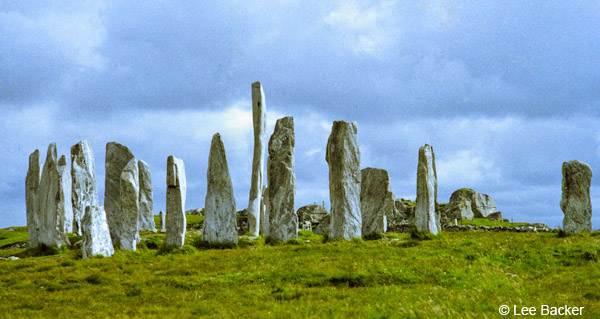
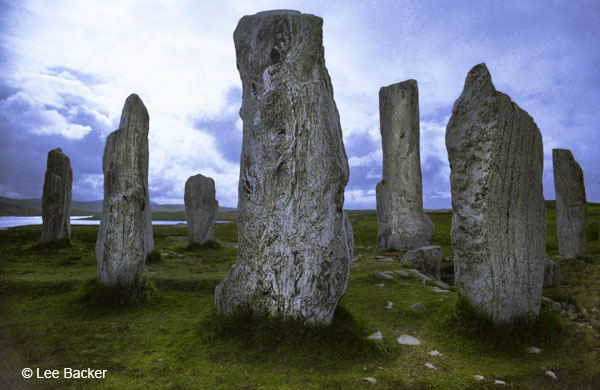
Happy New Year!
Stonehenge
Yes, it's another scanned image, this time from a 35mm b&w negative taken in 2000. I have lots more images to scan, but my resolution for next year is to post new work as well.
Next year promises to start out busy. I am currently preparing for a photo presentation of megalithic sites in Europe, including the photo above, to be given in March. Also, as a member of the Soho Photo Gallery, I am participating in an exhibit along with several other members at the Red Filter Gallery in Lambertville, NJ.
As the sun sets on 2011, I want to wish everyone a happy, healthy, and joyous 2012.
Nova Scotia, 1974
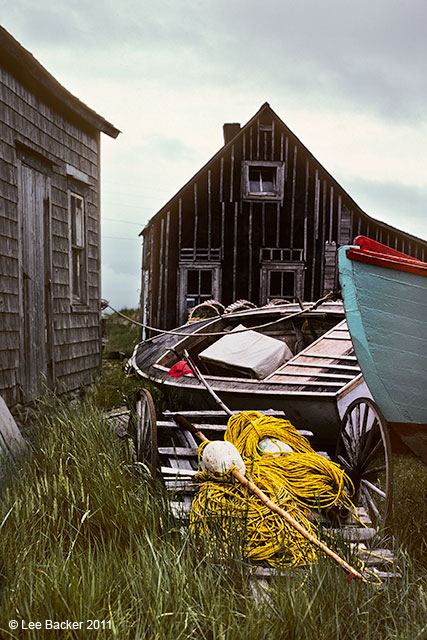
Scanned Slides of Milford Sound, New Zealand
Here is another discovery I made while sifting through decades of my old slides. I found slides of Milford Sound in New Zealand from a trip in 1989. Rain-drenched mountains rise steeply from the water, with clouds swirling above them and below. How uninteresting these photos would have been if the sun were shining! They would have been ordinary postcard shots. The dyes in many of these slides had partially faded, leaving an uneven magenta or blue cast to them. Since they were almost monochromatic, conversion to black and white seemed the way to go. Four images are in the Milford Sound, NZ gallery on my website.
